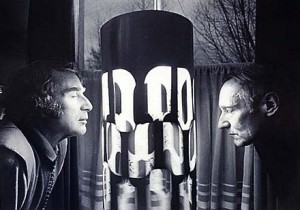Hello, 205! Now’s the time for the diamond in your portfolio: the doc.
Aims of the Exercise
For you to:
- Demonstrate an awareness of how to blend media theory, history, and practice through the composition of a single audio piece.
- Speak for and about the history of sound reproduction in such a way that accurately (or fairly) represents multiple communities / perspectives.
- Exhibit a knowledge of how to persuasively record and edit audio.
Constraints for Audio
- Between four and seven minutes long
- One text title (for your blog entry), but no other text
- The audio should emerge from your “Found Sound” and respond (in some way) to your peer’s “Re: Found Sound”
- The audio should consist of your voice as well as historical audio of some sort (e.g., field recordings, radio broadcasts, or vinyl/tape/MP3)
- Editing: whatever you wish
- Due: Tuesday, November 23rd
Steps
(1) Listen (at least twice) to your “Found Sound†and your peer’s response (“Re: Found Sound”) to it. Take notes. Determine how to transition from your initial thoughts, as well as your peer’s critiques, into a more polished audio documentary. Remember that you are creating an account of historical events and representing people in so doing.
You might also listen to other documentaries. Consider KEXP or the Kitchen Sisters.
(2) Continue researching your topic. Narrow down the time frame and concretely identify the media, communities, and politics involved.
(3) Identify one (and only one) historical issue at hand. Articulate how your documentary will approach that issue through multiple communities / perspectives. Your issue should be neatly tied to the medium or media you are studying and how it / they are culturally embedded. (Recall the boundary object exercise?) If you cannot concretely articulate a single issue, then perhaps your documentary is not focused. Suggestion: attend to examples, avoid generalities, and refine the time period to something manageable. And don’t forget: your audience will be listening, not reading.
(4) Identify your target audience and at least one existing radio station, podcast, or website that would play your documentary. At the doc’s end, you’ll need to mention the radio station, podcast, or website. That said, the conventions and style of your documentary should fit the station, podcast, or site you select.
(5) Start composing your documentary. I suggest writing it first. As you write, make sure to leave room for the audio evidence. (Note: One typed, double-spaced page usually equals two minutes of reading aloud.)Â Also make sure to introduce your evidence in a way that makes sense to the audience and/or gives necessary credit where credit’s due (e.g., “According to ____”). You might also think about when repetition and/or emphasis will be necessary. Again, they are listening, not reading—one reason why narrowing the doc to one and only one issue is a good idea.
(6) Record your voice-over and then add the audio evidence. Listen to it when you’re finished. Are the levels ok? Does the audio sound good on speakers and headphones? Let others give it a listen, too. What do they think? Do you sound like you are reading? Does your voice sensationalize the issue? Does your voice sound like someone who is invested in the topic?
(7) At the end of your documentary, make sure you:
(a) mention your name, documentary title, and your station, podcast, or website,
(b) state that your documentary is related to BIS 205 at UW-Bothell,
(c) state whether your audio was used with permission, fair use, or within the public domain, and
(d) thank everyone who warrants it.
For example, I might end my documentary like so:
“For KEXP 90.3, I’m Jentery Sayers. This documentary, ‘A Brief History of the Cut-Up,’ has been a project for BIS 205 at the University of Washington, Autumn Quarter 2010. A special thank you to all of the students in 205, as well as William S. Burroughs, for ideas, support, and inspiration. Thanks, too, to Genesis P-Orridge and Ian Svenonius for the interviews. All audio in this documentary abides by fair use and copyright laws or is in the public domain. Interviews were conducted and recorded with signed permission from the interviewees.”
Depending on your style, you might was also want to give your documentary an introduction of some sort. That’s not required, tho.
(8) Give your documentary a title, which will also be the title of your blog entry.
(9) Save, export as an MP3, and upload it to the blog. Please categorize it under “audio doc.â€
Outcomes
(1) Your audio documentary should be your best work of the quarter thus far. It should not only make persuasive use of audio evidence; it should also fairly represent the subjects and topics at hand and avoid hyperbole.
(2) Either explicitly or implicitly, your audio documentary should mobilize the theories and histories we’ve discussed during class meetings. Any listeners from the course should recognize a reference (again, either explicit or implicit) to Sterne, Alcoff, Schafer, Kozloff, Glass, Burroughs, Giovannoni, DJ Shadow, Kool Herc, or “invisible technologies” when they hear one.
(3) Although it does not need to be a high definition production, your audio documentary should be recorded and edited in such a way that transitions are smooth, voice-over is clear, dissonances are limited, and the narrative is easy to follow.
Schedule
Your audio documentary is due on our audio blog by the start of class on Tuesday, November 23rd, when we’ll listen to some of them (perhaps yours!) in class. The blog entry should include both a title for your audio piece and your playable MP3.  That’s it. Please categorize it under “audio doc.†I will respond to the documentaries (and, more broadly, your audio portfolio) via a letter to you.






